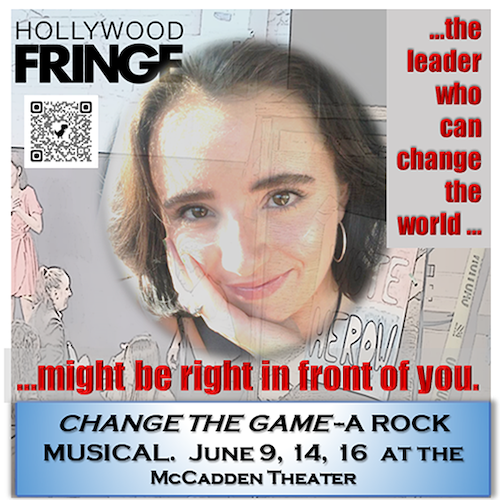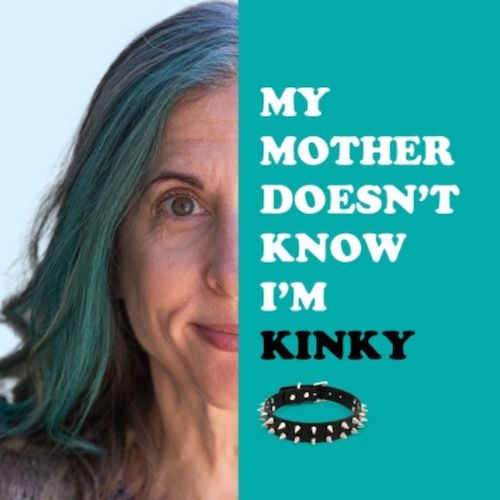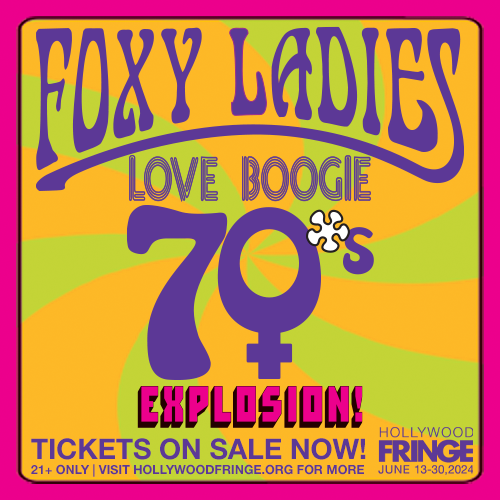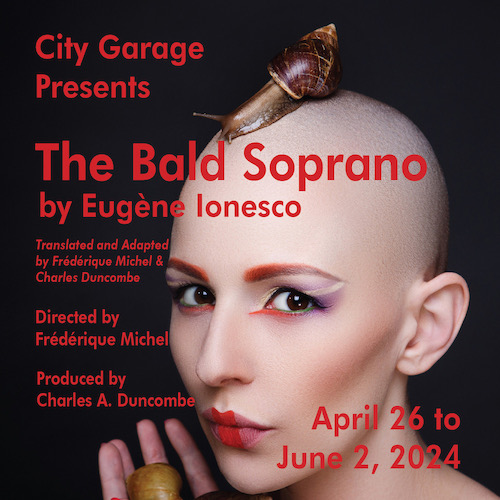
Neil Thompson, Stan Mazin, Cathy Diane Tomlin and Belinda Howell (Photo by Doug Engalla)
Reviewed by Martίn Hernández
Group Repertory Lonny Chapman Theatre
Through March 3
RECOMMENDED
Seventy years after its first iteration as a television play, Reginald Rose’s work – originally titled Twelve Angry Men – remains a pungent critique of racism and xenophobia. Sherman L. Sergel adapted the teleplay for the stage in 1955 and Rose did the screenplay for the classic 1957 film featuring Henry Fonda in the lead role. Director Tom Lazarus took Sergal’s version of the play — which might have been titled Twelve Angry Old White Men — and changed the gender and race of some of the characters. The result is a production with a talented cast that, despite a bit of incongruity in the 1950s setting, delivers solid performances under Lazarus’ thoughtful staging.
Set in the sweltering summer of 1958 Manhattan, our disparate lot meet in a dank jury room to decide on the fate of a teenaged boy accused of murdering his father. For most of them, it is an open and shut case, and they call for a straw vote to confirm unanimity so they can beat the subway commute or catch the Yankees—Cleveland game. But a lone “not guilty” vote from the calm and cordial Juror #8 (Neil Thompson) throws the others off the rails, much to the consternation of some and the fury of others, like Juror #3 (Mark Stancato). As Juror #8 lays out his doubts in a rational manner, Juror #3, convinced of the defendant’s guilt and championing law and order, counters with angry invectives — and the two become involuntary nemeses, engulfed in a battle of wills over another person’s life or death.
Supporting Juror #3 is Juror #10 (Belinda Howell), who would be at home at a MAGA rally. with her diatribes that refer to the defendant and those of his ethnicity as “those people.” Her prejudiced logic trips her up more than once. Juror #9 (Stan Mazin) is a thoughtful older gentleman, open to taking Juror #8’s concerns into consideration while Juror #6 (Cathy Diane Tomlin) and Juror #12 (Mouchette van Helsdingen) have opinions as rigid as Jell-O. Meanwhile, mild-mannered Juror #2 (Paul Cady) inadvertently reinforces Juror #8’s weight on the scales of justice.
Lazarus’s idea for color and gender-blind casting gets hamstrung in a production that is still set in 1950s U.S.A. with the 12 jurors as White males. Merely replacing a 1950s White male character with a female or a BIPOC character without reflecting cultural nuances has drawbacks that Lazarus does try to minimize, with mixed results. During one character’s racist and xenophobic rant, Juror #1 (Melissa Strauss), the female foreperson, and Juror #11 (Stephanie T. Keefer), an immigrant woman from a repressive home country, hold each other’s hands in support. Van Helsdingen’s Juror #12 is a female in advertising — no wonder she can be swayed so easily — and she makes sure everybody knows it . The obviously successful — look at that suit and those shoes! —Black Juror #5 (Tamir Yardenne) initially subverts stereotypes — until one learns he grew up in the ghetto like the boy on trial.
Still, the emotional impact of many of the characters’ arcs are universal. Mazin as Juror #9 delivers a wistful but powerful speech on the cost of loneliness among aged folks. Keefer’s Juror #11 presents an impassioned monologue on engaging in a system that many in her adopted country take for granted. Richard Reich’s Juror #7 offers dark comic relief, displaying more concern over getting to a baseball game than whether the accused lives or dies. Linda Alznauer’s Juror #4 may be in a frenzy, but she also offers reasonable challenges to Juror #8’s positions. Thompson’s sturdy Juror #8 is a genial “bleeding heart” liberal and a cypher who does not reveal much personal information, while Stancato’s Juror #3 may have ulterior motives for his rigid stance that are ultimately revealed in details that emerge of his private life. Juror #8 symbolizes Reason while Juror #3 represents Violence: both can be used to successfully achieve one’s goals but at what cost?
Lonny Chapman Theatre, 10900 Burbank Blvd, N. Hollywood. Fri.-Sat., 8 pm, Sun., 2 pm; thru March 3. https://www.thegrouprep.com.Running time: 90 minutes with no intermission.















